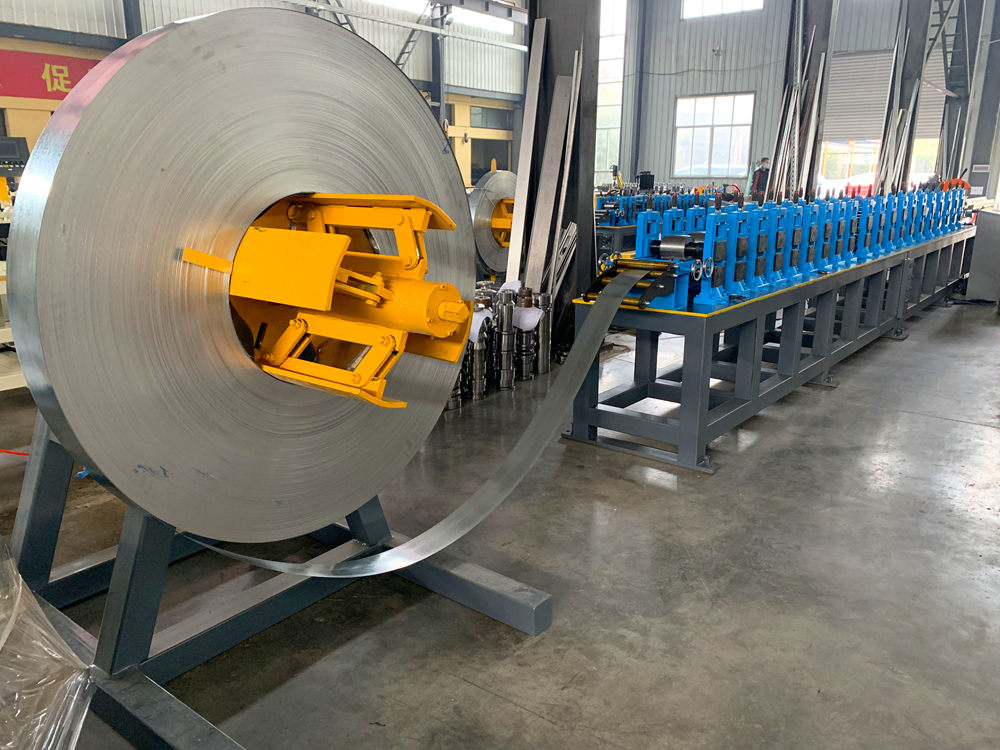
The Process of Stainless Steel Pipe Making Equipment
The demand for stainless steel pipes has been on the rise due to their excellent corrosion resistance, aesthetic appeal, and strength. As numerous industries, including construction, automotive, and food processing, require high-quality stainless steel pipes, the importance of efficient pipe-making equipment cannot be overstated. This article explores the various types of stainless steel pipe-making equipment, their processes, and the advantages they bring to manufacturing.
Types of Stainless Steel Pipe Making Equipment
Stainless steel pipe making involves several stages, each requiring specialized machinery. The primary equipment used includes
1. Tube Welding Machines These machines are crucial for forming pipes from flat sheets or strips of stainless steel. They utilize processes like TIG (Tungsten Inert Gas) or MIG (Metal Inert Gas) welding. Tube welding machines can be fully automated and are designed to provide consistent and high-quality welds.
2. Pipe Bending Machines Once the stainless steel pipes are formed, they often need to be bent to fit specific applications. Pipe bending machines come in various models, including rotary draw and roll bending machines. These machines ensure precise angles and radii, crucial for maintaining the integrity and aesthetic of the pipe.
3. Cutting Equipment Precision cutting is essential in stainless steel pipe production. Various cutting methods, such as laser cutting, plasma cutting, and bandsaw cutting, are utilized to achieve the desired lengths and shapes of the pipes.
4. Polishing and Finishing Machines To achieve the desired finish that stainless steel is known for, polishing machines are employed. These machines can remove oxidation and welding marks, allowing for a clean and attractive appearance. The finishing process may also include deburring and pickling, important for preventing corrosion.
5. Inspection and Testing Equipment Quality control is vital in pipe manufacturing. Inspection machines help test the pipes for integrity, ensuring that they meet industry standards and specifications. Non-destructive testing (NDT) methods like ultrasonic testing or eddy current testing are commonly used to assess the quality without harming the material.
The Pipe Making Process
The stainless steel pipe-making process is divided into several stages
1. Material Preparation It begins with the selection of high-quality stainless steel sheets or strips. The choice of material is crucial, as it directly influences the corrosion resistance and strength of the final product.

2. Forming The flat sheets of stainless steel are fed into tube welding machines, where they are formed into a cylindrical shape. The edges are then welded together, creating a continuous pipe.
3. Bending After forming, the pipes may require bending to fit specific layouts or designs. The use of specialized bending equipment ensures that the pipes maintain their integrity during this process.
4. Cutting Once the pipes are formed and bent, they are cut to the necessary lengths. This process is performed with precision to avoid material wastage and ensure uniformity.
5. Finishing The next step involves polishing and finishing the pipes to achieve the desired surface quality. This is not only for aesthetic purposes but also to enhance corrosion resistance.
6. Inspection and Testing Finally, rigorous inspections and tests are conducted to ensure that the pipes meet all industry standards. This quality assurance process is vital for maintaining the reputation of manufacturers and ensuring safety in applications.
Advantages of Modern Pipe-Making Equipment
Modern stainless steel pipe-making equipment offers several advantages
- Efficiency Automation in manufacturing processes reduces labor costs and increases production speed. This efficiency allows manufacturers to meet high demands without compromising quality. - Consistency Advanced machinery ensures that every pipe produced has the same specifications and quality, which is critical in industries that require high precision.
- Versatility Modern equipment can handle a variety of stainless steel grades and sizes, allowing manufacturers to diversify their product offerings.
- Reduced Waste Precision cutting and forming technology minimizes material waste, making the manufacturing process more sustainable.
Conclusion
In conclusion, the production of stainless steel pipes is a complex process that relies heavily on advanced equipment. From tube welding to polishing, each stage employs specialized machinery that enhances efficiency, ensures quality, and meets industry demands. As technology continues to develop, the future of stainless steel pipe-making equipment looks promising, offering even greater capabilities for manufacturers and ensuring the continued growth of this essential industry.